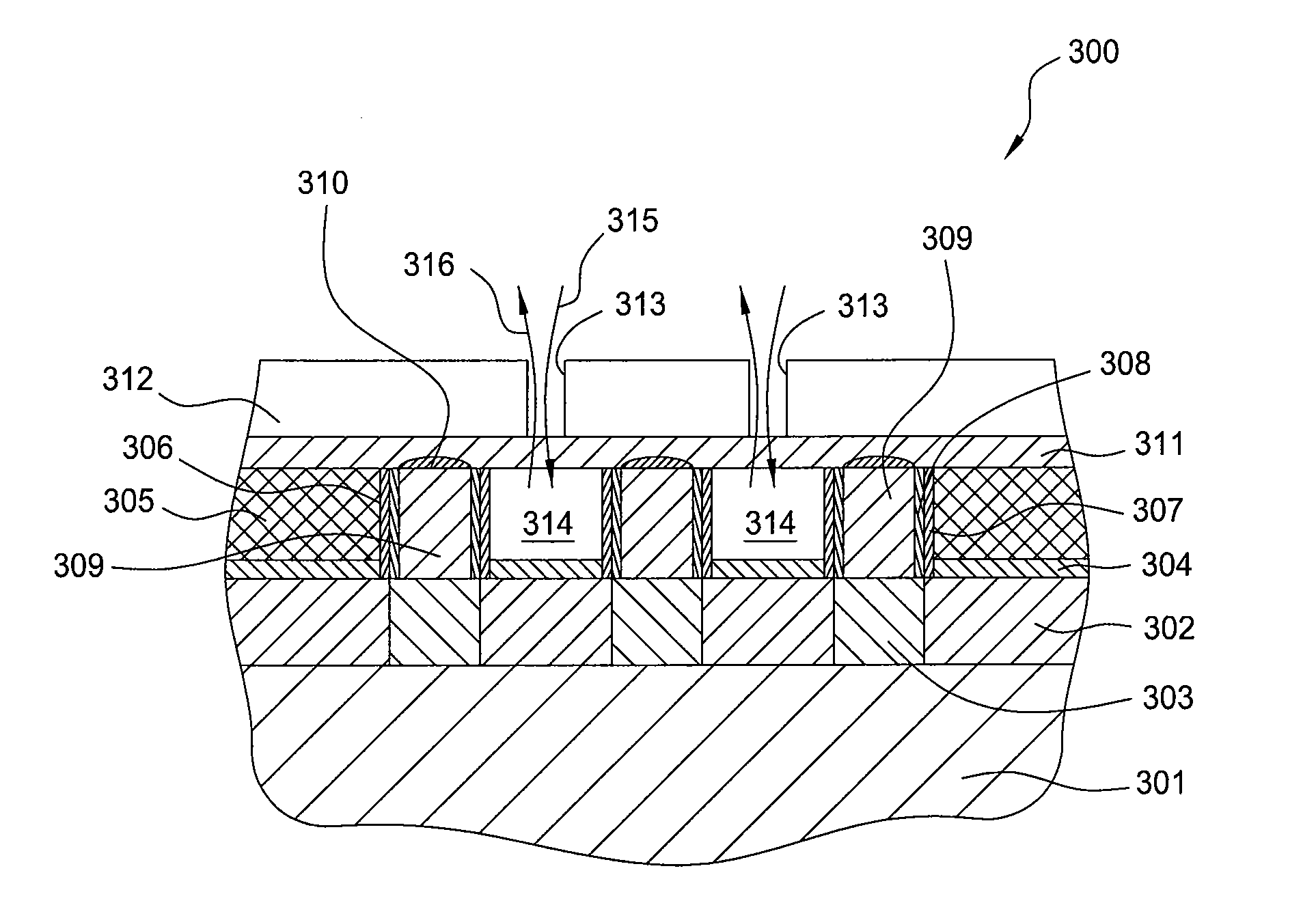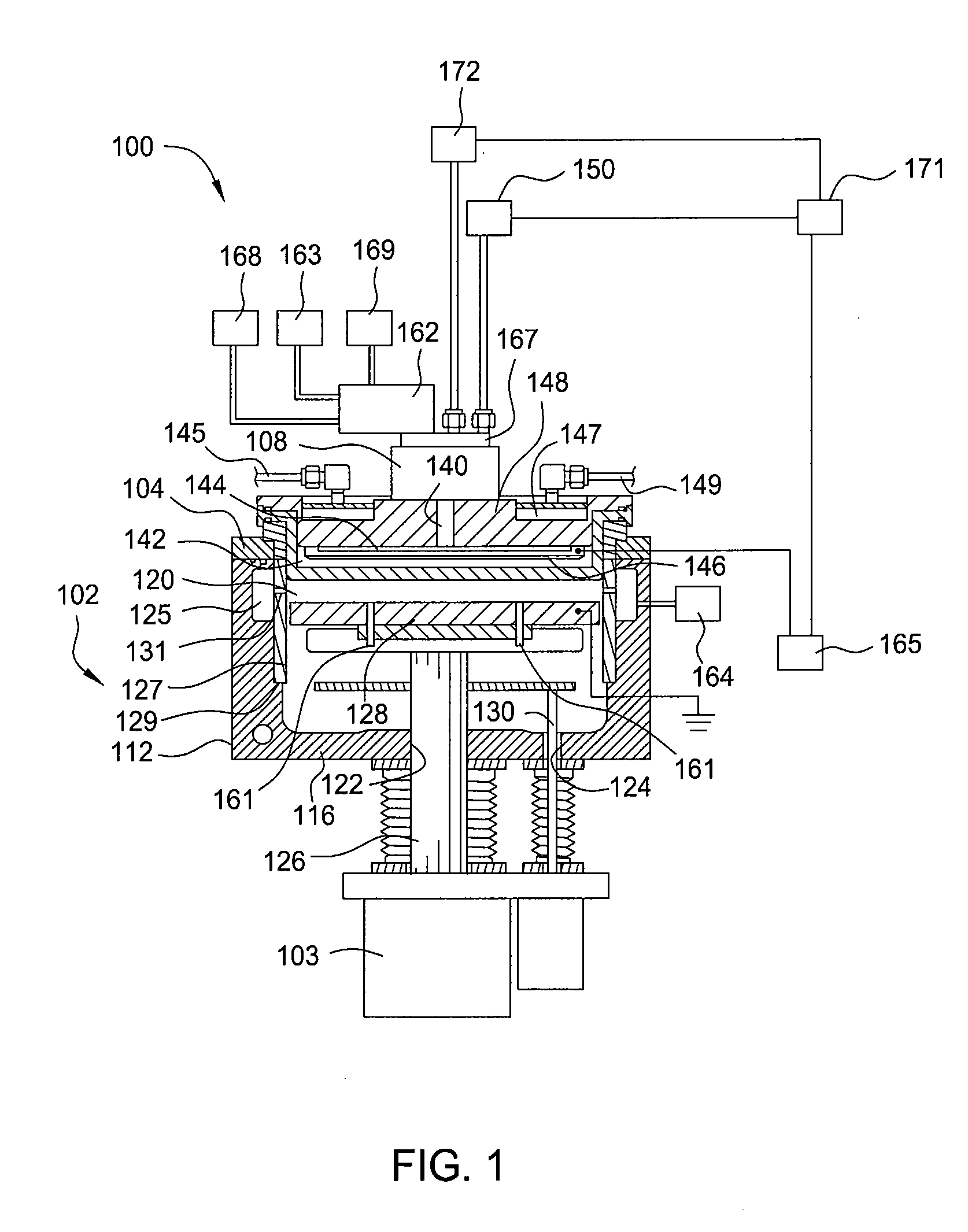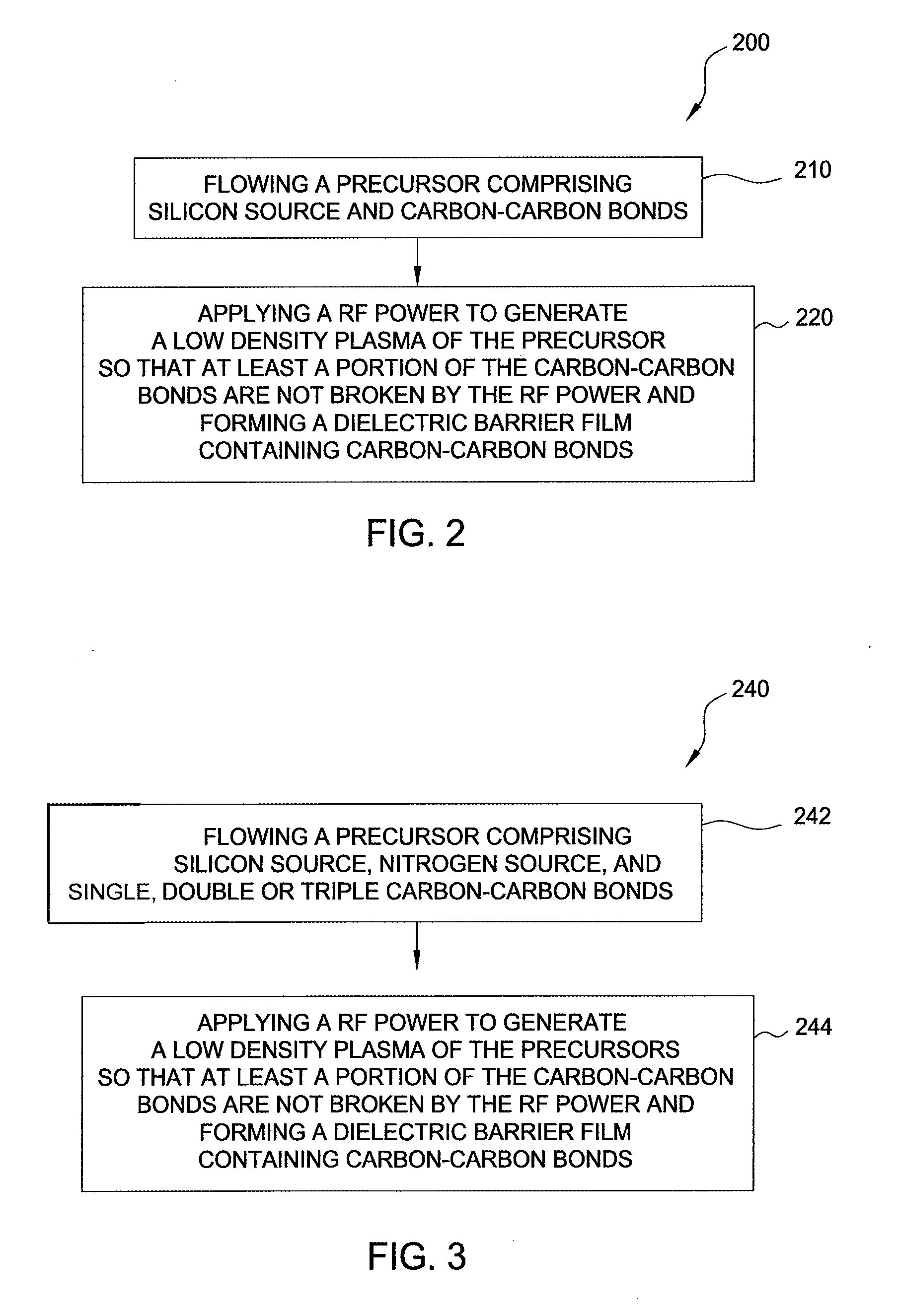Methods to obtain low k dielectric barrier with superior etch resistivity
a dielectric barrier and resistivity technology, applied in the field of integrated circuit fabrication, can solve the problems of short circuit formation and device failure, loss of etch selectivity and barrier property, etc., and achieve the effects of low ultra-violent absorption, high etching resistance, and low dielectric constan
- Summary
- Abstract
- Description
- Claims
- Application Information
AI Technical Summary
Benefits of technology
Problems solved by technology
Method used
Image
Examples
example 1
[0054]A PECVD deposition process for depositing a porous dielectric layer comprising silicon carbide using a precursor comprising the combination of trimethylsilane (TMS, (CH3)3SiH) and ethylene (C2H4). A carrier gas, such as helium, argon, nitrogen, or combinations thereof, is introduced with the precursor to the processing chamber.
[0055]The ratio of TMS and ethylene is set such that the atomic percentage of carbon of the mixture is greater than 15%. In one embodiment, the ratio of ethylene and TMS is between about 0.5:1 to about 8:1. In another embodiment, the ratio of ethylene and TMS is between about 1:1 to about 4:1. The processing parameters are as follows:
[0056]Flow rate (including precursor and carrier gas): between about 5 sccm to about 10,000 sccm, wherein the flow rate of carrier gas may be between about 5 sccm to about 10,000 sccm.
[0057]Spacing: from about 200 mils to about 2000 mils;
[0058]Temperature: between about 100° C. to about 550° C., or between about 200° C. to a...
example 2
[0061]A PECVD deposition process for depositing a porous dielectric layer comprising silicon carbide using a precursor comprising the combination of trimethylsilane (TMS, (CH3)3SiH), ethylene (C2H4) and ammonia (NH3). In one embodiment, the ratio of ethylene and TMS is between about 3:1 to about 5:1. The ratio of ammonia and TMS may be between about 1:10 to about 10:1. In another embodiment, the ratio of ammonia and TMS may be between about 1:4 to about 3:1. The processing parameters are as follows:
[0062]Flow rate (including precursor and carrier gas): between about 5 sccm to about 10,000 sccm, wherein the flow rate of carrier gas may be between about 5 sccm to about 10,000 sccm.
[0063]Spacing: from about 200 mils to about 2000 mils;
[0064]Temperature: between about 100° C. to about 550° C., or between about 200° C. to about 350° C.;
[0065]Chamber pressure: between about 10 mTorr to one atmosphere;
[0066]RF power: from about 15 W to about 3,000 W. In one embodiment, the RF power may be ...
example 3
[0067]A PECVD deposition process for depositing a porous dielectric barrier using a precursor comprising the combination of trimethylsilane (TMS, (CH3)3SiH) and ethylene (C2H4). The process conditions, including the ratio of TMS and ethylene, are set such that the atomic percentage of carbon is greater than 15%. In one embodiment, the ratio of ethylene and TMS is about 1:1 to about 8:1, the flow rate of the TMS / ethylene precursor and carrier gas is between about 5 sccm to about 10,000 sccm, and the temperature is about 350° C. For these conditions, the chamber pressure is between about 10 mTorr to about one atmosphere, the radio frequency (RF) power for plasma generation is between about 15 W to about 3,000 W, and the spacing between a substrate and a shower head, configured for providing precursors to the substrate being processed, is from about 200 mils to about 2000 mils.
Advantages of the Barrier
[0068]The dielectric barrier film of the present invention has several advantages ove...
PUM
| Property | Measurement | Unit |
|---|---|---|
| feature sizes | aaaaa | aaaaa |
| dielectric constants | aaaaa | aaaaa |
| dielectric constants | aaaaa | aaaaa |
Abstract
Description
Claims
Application Information
 Login to View More
Login to View More - R&D
- Intellectual Property
- Life Sciences
- Materials
- Tech Scout
- Unparalleled Data Quality
- Higher Quality Content
- 60% Fewer Hallucinations
Browse by: Latest US Patents, China's latest patents, Technical Efficacy Thesaurus, Application Domain, Technology Topic, Popular Technical Reports.
© 2025 PatSnap. All rights reserved.Legal|Privacy policy|Modern Slavery Act Transparency Statement|Sitemap|About US| Contact US: help@patsnap.com



